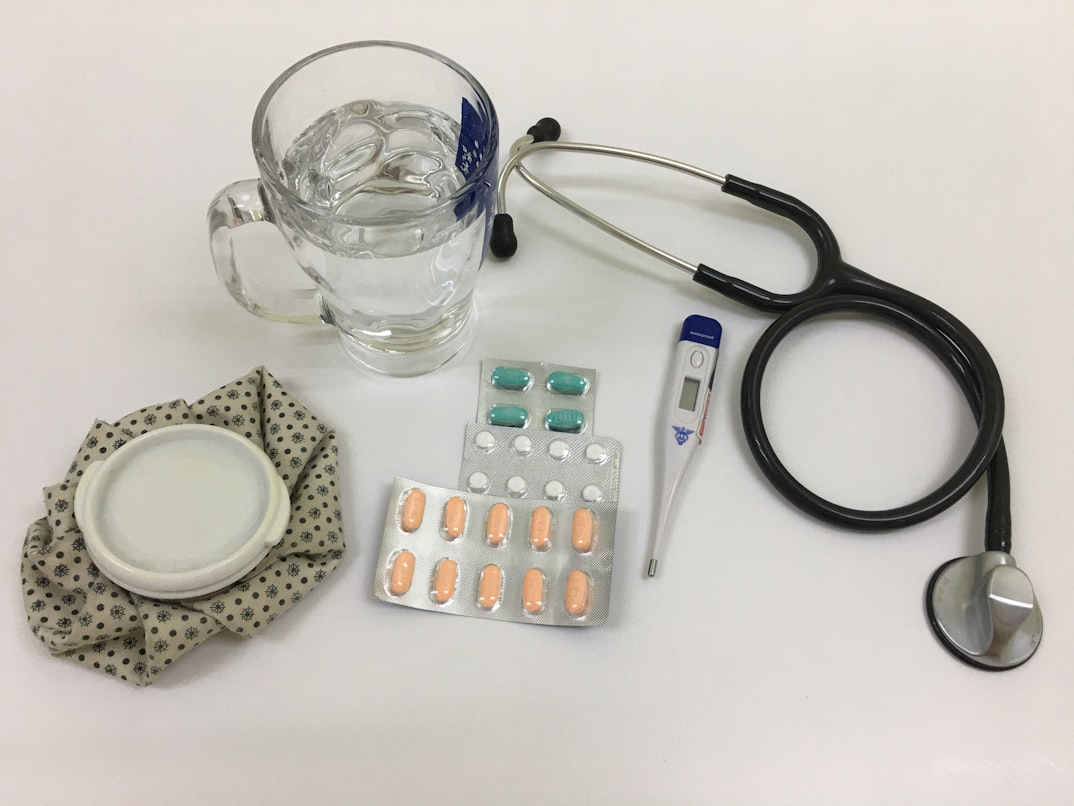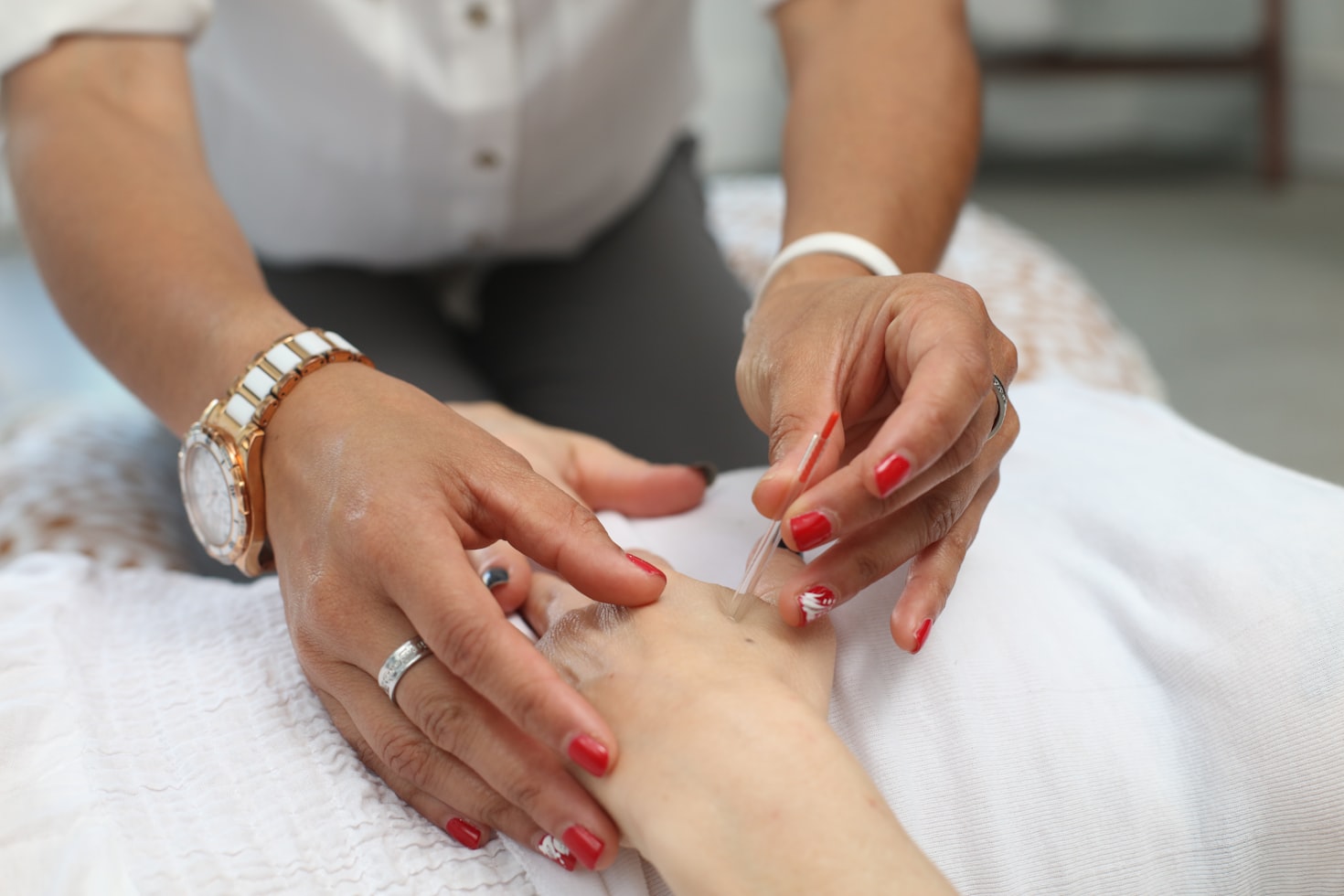Image by Photodjo from Getty Images from Canva Pro
Pain after a total knee replacement is a common but serious issue. As you may know, surgery of any kind is really planned trauma on the body and with trauma comes pain. But uncontrolled pain after your operation increases the risk of developing chronic pain or pain that is unnecessary and prolonged.[1] Severe pain after your operation may also have fatal consequences immediately after your surgery as your body will place an immense stress on your heart and lungs in response to the pain.1 This is why proper pain management after your operation is essential to optimize the outcomes of your surgery and recovery process. This blog will discuss the specific and tangible ways that you may influence and manage pain (click this link to learn more about pain after your knee replacement) after your operation. If you would like to learn more about what you can do before your knee replacement surgery click here. Also, this blog will mainly focus on non-pharmaceutical management techniques, as the different pain medications and their usage is outside the scope of this blog.
What can I do to manage my Pain
Neuromuscular electrical stimulation
Neuromuscular electrical stimulation or NMES is a form of electrical therapy. An electrical impulse is sent towards a specific muscle or muscle group to encourage that muscle to contract while the person also tries to actively engage that muscle themselves.[2] The goal of this treatment is to regain strength, range of motion, and the connection between brain and muscle.[2] Interestingly, a study has also found that NMES may play a role in pain management.[2] 66 people with total knee replacements were either given NMES along with a typical physical therapy program or just a physical therapy program.[2] The people who used NMES had significantly better hamstring strength, quadricep strength, knee range of motion, and they performed better in simple exercises such as getting up from a chair and timed walking challenges.[2] The downfall noted by the researchers is the lack of a standard or universal program to apply NMES.[2] In other words, there is no evidence that tells us how much or how often NMES should be done, or even what sort of person would benefit the most from NMES. To summarize, NMES may be helpful after surgery for strength and functional tasks but there is not enough research to support the use of NMES specifically for pain relief and further research needs to be done to determine the ideal dose of NMES.
Transcutaneous electrical stimulation
Transcutaneous electrical stimulation or TENs is another form of electrical therapy. Whereas NMES indirectly affects pain, the goal of TENs is to directly mitigate or diminish the amount of pain experienced. TENs provides an electrical current to the painful area to stimulate the nervous system within this area.[2] Stimulation of the nerves causes the body to release pain relieving chemicals.[2] Unfortunately, the evidence for TENs is not as strong or clear cut. While a study of 529 people with a total knee replacement showed that TENs significantly reduced pain and usage of morphine immediately after their surgery.[3] Another study showed that people who used TENs after their operation had the same amount of pain relief as their counterparts who did not use TENs at all.[2] It is important to know that both TENs and NMES works best with a conventional physical therapy program. Electrical therapy of any kind is not a replacement but an adjunct to your typical physical therapy and exercise program.

Cold therapy and compression
The idea behind cold therapy and compression is to manage pain by reducing the amount of swelling and inflammation that will occur after your surgery. Cold temperatures slow down the chemical processes within your body that causes inflammation and pain.2 While compression is meant to prevent excess chemicals and fluids from filling up the knee joint and surgical site.[2] From a study of 30 people who underwent a double total knee replacement (learn more about single versus double knee replacements in this blog), they found that the knee that was given a cooling device felt significantly less pain, and there was less pain medication usage.[2] But, the evidence for cold therapy is not conclusive, although some studies show promise others have not been able to replicate the same result.[2] Similar to NMES, there is a lack of agreement on what method of applying cold therapy and compression is best. While some studies have found that cold-compression machines did better at alleviating pain, other studies found that simple ice and elastic bandages for compressioon did just as well in terms of pain relief.[2][4]
 Image by antonikachanel, from Unsplash
Image by antonikachanel, from Unsplash
Acunpuncture
Although acupuncture is not for everyone, there is good evidence that supports the usage of acupuncture after a surgery to manage pain. The theory behind acupuncture is not well understood, but similar to TENs this treatment is thought to activate the body’s natural pain numbing mechanisms. From a study of 62 people with total knee replacements, half were given some form of acupuncture while the other half was not. The results showed that acupuncture improved pain relief and reduced the needs for pain medication immediately after their surgery.[5] These improvements lasted past the immediate phase as another study of 80 people who had undergone a total knee replacement showed. This study demonstrated that the effects of acupuncture lasted for at least 3 weeks, as the people within this study noted better pain relief, reduced swelling, and faster recovery of their range of motion within their knee relative to people who did not use acupuncture.[5]
 Image by cdx2, from Unsplash
Image by cdx2, from Unsplash
Music therapy and activity diaries
These two treatments have been lumped together as they are relatively new forms of treatment with the least amount of evidence to support their usage. Nevertheless they have been included in this blog because they are easy to do, cost next to nothing, and are possibly beneficial.
The purpose of an activity diary is to keep yourself engaged (click here to learn more about keeping up with your recovery exercises after knee replacement) with your own recovery process and provide a sense of achievement through goal setting.[6] A study of 290 people with total knee replacement did now show a significant difference in pain intensity.6 But they did find that an activity diary improved mental health factors which indirectly affect people’s perception of their pain.[6] For instance, people who used an activity diary did not show catastrophizing or the tendency to think negative thoughts and assume the worst possibilities after surgery.[6]
Musical therapy can be as simple as listening to music you enjoy after your operation. From a study that included 58 people with total knee replacements, with the majority being women, this simple practice has been shown to distract people from their pain.[7] This small study showed that people who listened to music immediately after their operation had less intense pain and less need to use pain medication.[7] In both cases more evidence is needed but both methods are cost effective, simple and have absolutely no downside.
My advice to you
Please know that all the interventions listed above are not absolutely essential; do not feel pressured to spend hundreds or thousands of dollars to purchase a cold compression (cryotherapy) machine. In fact, evidence to support some of these interventions is not concrete; so it may not be the best use of your time to try and incorporate each one of these treatments into your recovery process.[8] What is essential is to follow your physical therapy plan and pharmaceutical treatment plan.[1] With pain medication there are a few things to remember. First, try your best not to stray away from the plan provided to you. Secondly, if you are in pain it is best to use your medication and not to “tough it out”.[1] Finally, evidence shows that a combination of pain medication will work best to relieve pain so do not be afraid to discuss your options with your surgeon.[1] Being consistent with your physical therapy plan is the most efficient way to decrease your pain. Using ice, compression, and TENs will provide immediate pain relief but the benefits may not last over time. In terms of when to apply these treatments, ice and compression should be applied after exercise while TENs may be applied before exercise to preemptively relieve pain or after exercise to reduce pain.
Conclusion
Within this blog we have covered several methods of managing pain such as electrical stimulation, cold therapy and compression, musical therapy, and activity diaries. Each of these interventions has evidence that supports their usage after a total knee replacement to reduce pain. Consider including one or more of these therapies to relieve pain after your total knee replacement!
Regardless of whether or not you decide to use these additional treatments, the Curovate Physical Therapy App is a sure fire way to optimize your recovery and get you back on your feet. Curovate is an evidenced-based app with guided physical therapy plans, daily guided video exercises, ways to measure and monitor your progress, and much more! Download the Curovate App by clicking on the links below.
If you need further customized assistance during your surgery or injury recovery check out our Virtual Physical Therapy page to book your 1-on-1 video session with a physical therapist.
 |
 |
|---|







